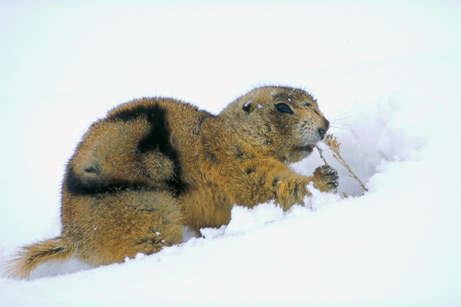
A Utah prairie dog emerges to forage in spring snow. Though not completely dormant during the winter, prairie dogs return to activity and aboveground life in earnest in spring.
一只猶他土撥鼠出現(xiàn)在春雪過(guò)后的草料堆上。盡管它們?cè)诙觳皇峭耆撸翐苁笠酱禾觳耪嬲_始它們的陸上活動(dòng)。
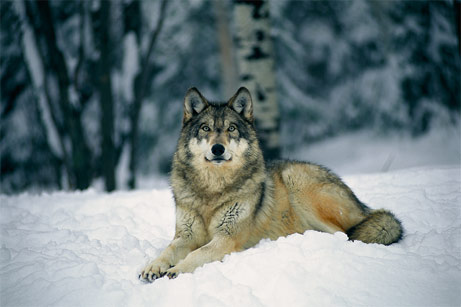
Reclining but alert, a gray wolf lies in new-fallen snow in the International Wolf Center’s live enclosure. The institution promotes knowledge about wolves’ ecology and their relationship with humans and the land.
臥著休息卻始終保持警惕,“國(guó)際狼中心”生態(tài)區(qū)的一只大灰狼臥在剛下過(guò)雪的地上。這個(gè)機(jī)構(gòu)對(duì)狼的生態(tài)學(xué)以及它與人類和土地的關(guān)系進(jìn)行研究。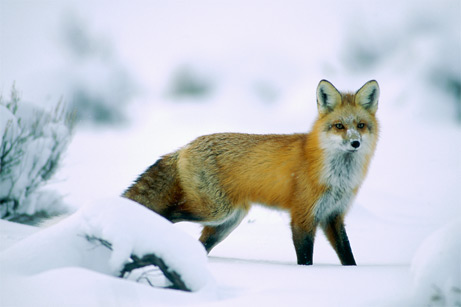
A lone red fox picks through the snow in Yellowstone National Park. Unlike the pack-forming gray wolves in the park, red foxes are solitary and occupy home ranges that may be shared with only one or two members of the opposite *.
一只紅狐在黃石國(guó)家公園的雪地里覓食。不像公園里群居的狼群,紅狐們獨(dú)來(lái)獨(dú)往,而且只和一到兩個(gè)異性伴侶分享自己所占據(jù)的領(lǐng)地。
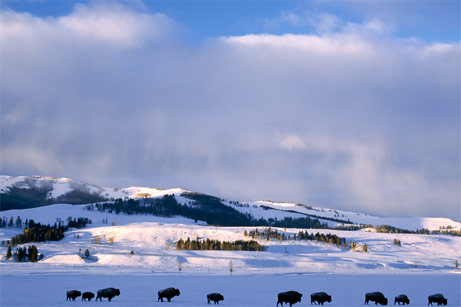
Bison dot a Yellowstone snowscape,some sweeping the drifts aside with their heads to uncover vegetation.A thick mantle of hair over their forequarters and heads and a heavy coat over their hindquarters allow bison to keep warm in harsh winter temperatures.
黃石公園雪景上點(diǎn)綴著一些野牛。有些正埋頭刨出被蓋住的植物。覆蓋了頭部和前半身的濃密的毛發(fā),和腿部以及臀部野的厚重的皮毛,讓它們?cè)跉夂驉毫拥亩镜靡陨妗?/P>
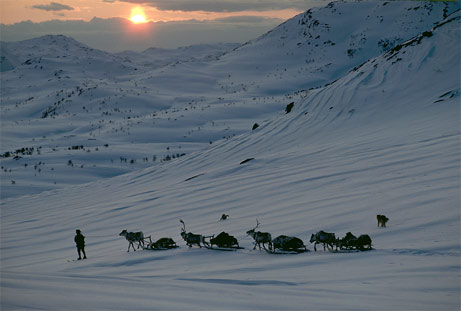
“Lapland knows no fixed boundaries; it extends across arctic Sweden, Norway, and Finland into Russia. … The mountain Lapps depend on their reindeer for a livelihood, much as their forebears did more than a thousand years ago, and cling to many age-old customs in their seasonal pursuit of pasturelands.”
拉普蘭地區(qū)以無(wú)確定的邊界聞名;它涵蓋了瑞典、挪威、芬蘭以及俄國(guó)的北極圈地區(qū)。拉普蘭山里人和他們一千多年前的祖先一樣,靠他們的馴鹿謀生,堅(jiān)持著古老的游牧生活的習(xí)俗。


















